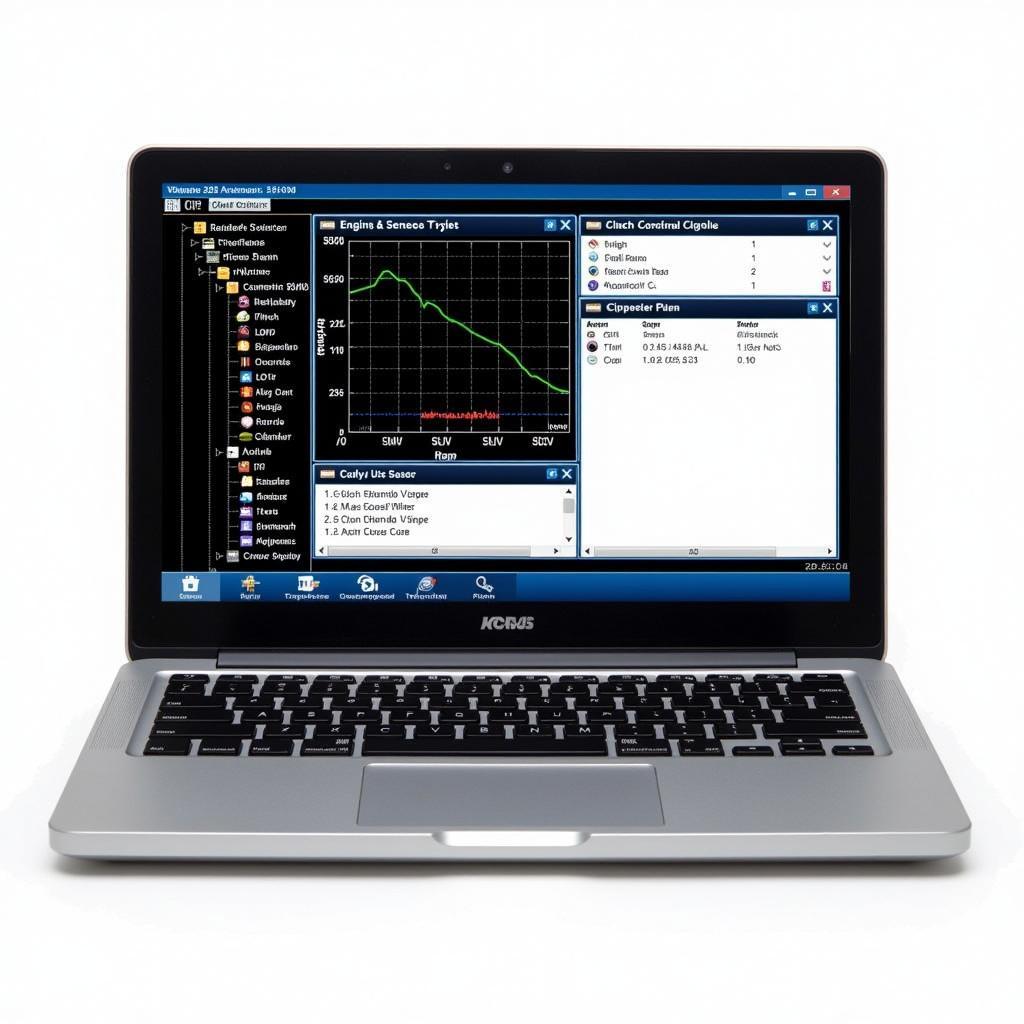VCDS, the versatile diagnostic software, empowers car owners and mechanics alike to delve into the inner workings of Volkswagen, Audi, Seat, and Skoda vehicles. This guide provides a comprehensive overview of using VCDS, covering everything from basic diagnostics to advanced coding and adaptations. We’ll explore the power of VCDS and how it can help you troubleshoot and resolve automotive issues effectively.
Many car enthusiasts and professional mechanics find VCDS indispensable for diagnosing and addressing a wide range of vehicle problems. But what exactly can you do with this software? From reading and clearing fault codes to performing complex adaptations and coding, VCDS offers a plethora of functionalities. Let’s explore some of the key capabilities of using VCDS. Have you ever wished you could tweak your car’s settings beyond the standard options? VCDS unlocks a world of customization possibilities. If you’re interested in learning how to disable seat belt warnings using VCDS, check out this helpful resource: vcds seat belt warning off.
Unlocking the Power of VCDS: Key Features and Benefits
VCDS allows you to access various control modules within your vehicle, giving you a detailed view of its operational status. You can read fault codes, identify the root cause of issues, and clear them once resolved. Beyond basic diagnostics, using VCDS lets you monitor live data streams, providing real-time insights into sensor readings and system performance. This is incredibly useful for pinpoint diagnostics and identifying intermittent problems.
Using VCDS also empowers you to perform adaptations and coding, tailoring various settings to your preferences or fixing software-related glitches. Whether it’s adjusting throttle response or customizing lighting settings, VCDS opens up a world of possibilities for personalized vehicle control. For example, you can use VCDS to perform a transmission reset, which can often resolve shifting issues. For more information on this, you might find this guide helpful: 01m reset trans vcds.
How to Use VCDS: A Step-by-Step Guide to Basic Diagnostics
Before diving into advanced functionalities, let’s cover the basics of using VCDS for diagnostics. First, ensure you have the correct VCDS interface and software compatible with your vehicle. Connect the interface to your car’s OBD-II port and launch the VCDS software on your laptop. Select the appropriate control module for the system you’re diagnosing. Then, click on “Fault Codes” to read any stored trouble codes. Once you’ve identified the issue, use online resources or repair manuals to understand the code and its potential causes. After resolving the problem, use VCDS to clear the fault codes.
Advanced VCDS Techniques: Coding and Adaptations
While reading and clearing fault codes is essential, VCDS’s true power lies in its coding and adaptation capabilities. These features allow you to modify various vehicle settings, enabling customizations and fixes beyond basic diagnostics. For instance, you can disable daytime running lights, adjust the automatic transmission shift points, or even personalize the welcome message displayed on your instrument cluster. However, it’s crucial to exercise caution when using these advanced features. Incorrect coding or adaptations can lead to unintended consequences, so always back up your existing settings before making any changes. You can find valuable resources and tutorials online that provide detailed instructions on how to download your car’s map files using VCDS: how to download you car's map files using vcds.
Common VCDS Troubleshooting Tips
Even experienced users can encounter issues when using VCDS. Here are some common troubleshooting tips:
- Interface Connection Problems: Ensure the interface is properly connected to both the car’s OBD-II port and the laptop. Try a different USB port or cable.
- Software Compatibility: Verify that you are using the correct version of VCDS for your vehicle’s model year.
- Communication Errors: Check for any interference or loose connections. Restarting the software or the vehicle can sometimes resolve communication issues.
- Incorrect Coding: If you encounter problems after performing coding changes, restore the original backup of your settings.
“VCDS is an invaluable tool for anyone serious about working on VAG vehicles,” says automotive expert, Michael Schneider, ASE Certified Master Technician. “Its ability to access deep diagnostic information and perform advanced coding is unmatched.”
Conclusion: Empower Yourself with VCDS
VCDS offers a comprehensive solution for diagnosing, troubleshooting, and customizing VAG vehicles. By mastering its features and functionalities, you can gain unprecedented control over your car’s operation. While this guide provides a solid foundation for using VCDS, continuous learning and exploration are key to unlocking its full potential. Want to explore purchasing options? Visit our page on vcds kopen.
Need expert assistance with component protection removal? Explore our guide on component protection removal using vcds.
Need help? Contact us via Whatsapp: +1 (641) 206-8880, Email: [email protected] or visit us at 276 Reock St, City of Orange, NJ 07050, United States. Our customer service team is available 24/7.


